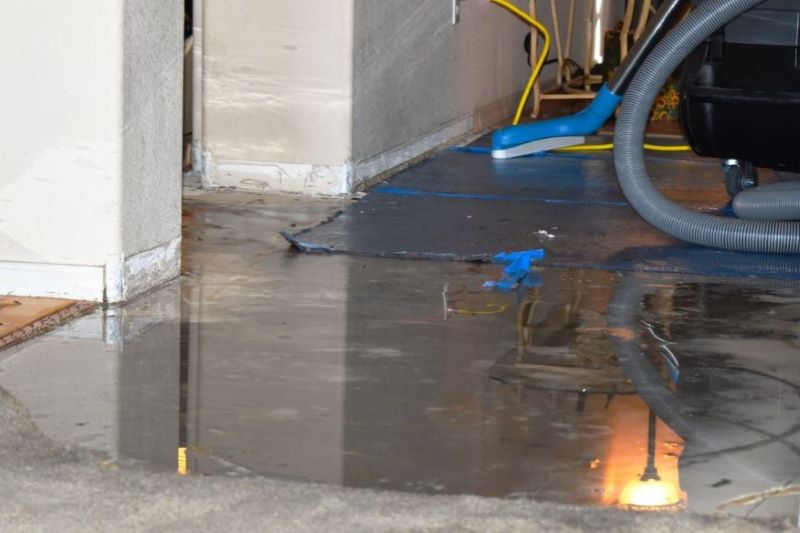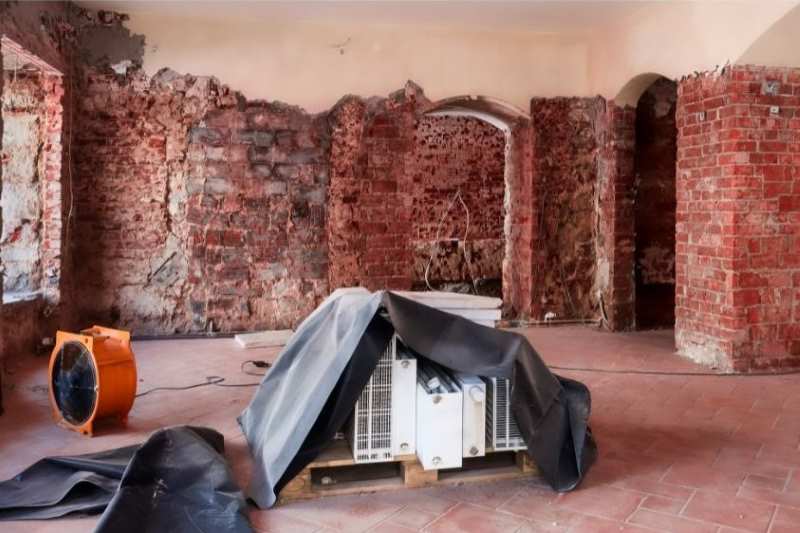Has there recently been a pipe burst or water damage to your home? Not only may water damage be bothersome, but if left untreated, it can become a serious threat to health. When you have water damage in your home, your best course of action is to mitigate the damage to the extent you can. If you want to prevent the water damage from spreading to other areas of your home, you must remove all of your belongings from the area, let the air out, and take extra precautions.
It’s essential that you quick dry your home after water damage out as soon as possible. You can either work on this right away or hire professionals as soon as you can. In any case, you can utilize this blog to learn how to quick dry your home after water damage.
Easy Ways to Quick Dry Your Home After Water Damage
In most situations, you’re probably overwhelmed dealing with water damage. Worry no less! These easy ways will help you quick dry your home after water damage.
1. Get Windows Open

To bring fresh air into your home, it would be perfect if you opened all of your windows. Open the windows as wide as you can towards the sun’s rays. It will make it simpler for you or the professionals to dry out the damaged areas.
2. Remove Undamaged and Damaged Items
Remove any items and furniture that have been damaged or undamaged; this includes bedding, boxes, blankets, sofas, documents, electronic devices, and other stuff. Make sure they’re not damp, and if they are, clean them up right away because neglecting to do so could serve as a feeding ground for bacteria or mould.
3. Remove the Water

Remove all remaining water from your home, including any standing water. Mold, germs, and other unwanted organisms should not grow and thrive. The area will dry up more quickly depending on how much water there is in it. Check your kitchen, bathroom, and other rooms for water leaks.
4. Utilize a Dry/Wet Vacuum
A dry/wet vacuum can help in the process whether you pumped out most of the water or you just need to clean up any lingering water. To speed up the drying process, drain as much of the water as you can.
5. Turn On a Fan
If, after everything has been cleaned up, there is still lingering water inside your home, turn on fans to speed up the drying process. Any moisture will be driven out of the room by doing this.
6. Utilize A Dehumidifier

To remove any last traces of moisture from your home, particularly in the kitchen, bathrooms, and basements, utilize a dehumidifier. A low-cost dehumidifier is available for purchase online or for rental. Remember, though, that utilizing these dehumidifiers should only be done so as a last resort because they typically only work temporarily.
The water damage degree might vary from one case to another. The water damage needs to be evaluated by professionals, who can also utilize industry-grade dehumidifiers and relevant machinery to permanently relieve any worries.
7. Cleanup the Damaged Area
If the sort of water damage is category 1, a solution of bleach and water could be the best way to clean the area. Depending on numerous factors including the type of wall and the extent of the water damage, the cleaning solution that is required may change. Use a sponge or rag when applying this mixture to avoid getting any bleach on the surfaces. After that, use a fresh cloth to wipe everything down to get rid of any extra moisture.
8. Take Out Moisture
Take out as much moisture as you can from the damaged area. In other words, you need to get rid of and absorb moisture. To absorb moisture like a sponge, utilize desiccants like silica gel, clay, and calcium oxide.
Desiccants are substances that keep something dry. To keep an area free of moisture, which is necessary to stop damage, deterioration, bacterial growth, and mould growth, desiccants absorb humidity and moisture from the air.
Pack moist items such as water-permeable desiccant packets in airtight containers or enclosed spaces, such as closets. Depending on how much moisture an item has, desiccants may take days or weeks to change colour to show that they are absorbed.
9. Call Professionals

Having a second set of eyes assess the outcomes of any water damage cleaning is always a smart idea. By contacting water damage services, you can make sure that all areas are free of excess moisture, free of mould or bacteria, and that they can properly dry out after cleaning.
Summary
After water damage, drying out your home is a crucial part of the restoration process. However, if you don’t take the appropriate steps, it can be costly and time-consuming. Using the above-mentioned ways to quick dry your home after water damage will undoubtedly complete your job. On the other hand, you may also contact a professional right once to start the process of drying out your home if you are worried or unconfident about doing the job yourself. It will take less time to dry out your home and return it to its pre-damaged state if you act quickly.


